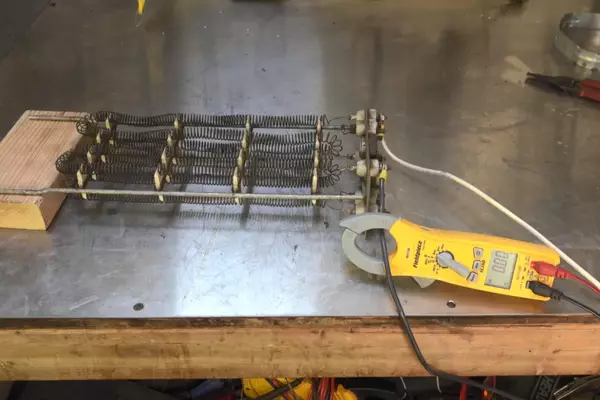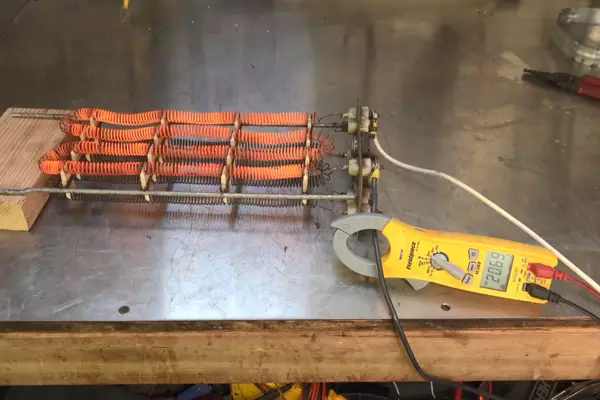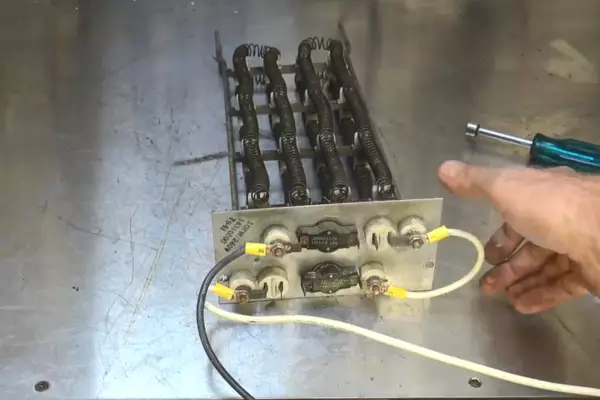Heat strips and their energy consumption are crucial elements in HVAC systems. These devices convert electrical power into heat, a process that involves factors like kilowatts, amperes, and voltage.
At the heart of this discourse is a common question: how many amps does a 10KW heat strip pull? In a nutshell, a 10KW heat strip operating at 240 volts draws approximately 41.67 amperes.
The calculation involves understanding key electrical concepts and the relationships between them. This underlines the role of electrical power, especially when considering heating appliances like a 10KW heat strip.
Contents
Basics of Electrical Power
What is Kilowatts?
A kilowatt is a unit of electrical power equivalent to 1,000 watts. Power in an electrical circuit is the rate at which energy is absorbed or produced. It determines how much work a device like a heat strip can perform.

The Ampere: A Brief Overview
An ampere, or amp, is the unit for electric current. It measures the flow of electric charge in a circuit. The higher the amp rating, the more electricity flows through the circuit.
What is Voltage?
Voltage, measured in volts, is the force that pushes electric current through a circuit. In many residential systems, 240 volts is the standard.
Calculation Essentials
When it comes to electricity, a few basic principles come into play that determine how much current a device will draw from a circuit. These principles can be encapsulated in two key formulas: Ohm’s Law and the power equation.
Ohm’s Law and Power Equation
Ohm’s law establishes a relationship between voltage, current, and resistance in an electrical circuit. It states that the current through a conductor between two points is directly proportional to the voltage across the two points, and inversely proportional to the resistance between them. It is usually formulated as I = V/R, where:
- I is the current, measured in amperes,
- V is the voltage, measured in volts, and
- R is the resistance, measured in ohms.
However, when we deal with electrical power (like the power consumed by a heat strip), we turn to another equation known as the power equation. The power equation states that the power (P) in any electrical circuit is the product of voltage (V) and current (I), formulated as P=VI.
So, when we know the power and voltage, we can rearrange this equation to find the current: I = P/V.
Significance of 240 Volts
In most residential applications, appliances and devices, including heat strips, are designed to operate at a standard voltage of 240 volts. This is important as the voltage directly impacts the current drawn by the device. In the power equation (P=VI), if we know the power (P) and voltage (V), we can easily find the current (I) drawn by the device.

10 KW Heat Strip Specifications
Heat strips come in different power ratings, and in this case, we are focused on a 10 KW heat strip.
Understanding 10 KW Heat Strips
A 10 KW heat strip, as the name suggests, is a heating element designed to consume 10 kilowatts of power when operating at full capacity. These devices find wide applications in heating, ventilation, and air conditioning (HVAC) systems, where they function by converting electrical energy into heat energy.
Each heat strip is designed to deliver a certain amount of heat, measured in British Thermal Units (BTUs). For instance, a 10 KW heat strip can produce approximately 34,130 BTUs of heat. The conversion from watts to BTUs is straightforward: 1 watt is equal to 3.413 BTUs.
Why 240 Volts for 10 KW Heat Strips
A 10 KW heat strip is typically designed to operate at 240 volts because it’s a common voltage level for residential and some commercial electrical systems. The choice of 240 volts is significant as it allows the heat strip to draw less current while providing the desired heating performance. This can result in more efficient operation and potentially longer service life for the heat strip and the overall HVAC system.
Calculating Amp Draw of 10 KW Heat Strip
Knowing the amp draw of a heat strip or any other appliance is essential for several reasons. It helps in the correct sizing of circuit breakers, wires, and the overall design of an electrical system.
Amp Draw Calculation: Step by Step
To calculate the amp draw of a 10 KW heat strip operating at 240 volts, we apply the power equation, as follows:
- Convert the power rating to watts: 10KW = 10,000 watts. We do this because the standard unit of power in the power equation is the watt.
- Note down the voltage: In this case, the heat strip operates at 240 volts.
- Apply the power equation: I = P/V. By substituting the power and voltage values, we find the current: I = 10,000W/240V ≈ 41.67A.
Factors Affecting Amp Draw
The amp draw calculated above is an approximation and assumes ideal operating conditions. However, the actual amp draw can fluctuate due to several factors:
- Line voltage variations: Fluctuations in the supply voltage can affect the current draw. Lower voltage usually results in higher current draw, and vice versa.
- Load conditions: If the heat strip is not operating at full capacity (e.g., in a part-load or staged heating scenario), it will draw less current.
- Efficiency: As the heat strip ages, its efficiency may decrease, leading to a higher current draw.
- Ambient conditions: Extreme temperatures and high humidity can impact the efficiency of the heat strip, which in turn affects the current draw.

10 KW at 240 Volts: The Numbers
When a 10 KW heat strip operates at 240 volts, the resulting numbers offer valuable insights into the power dynamics of heating systems.
Power to Amps Conversion
As calculated in the previous section, a 10 KW heat strip operating at 240 volts draws approximately 41.67 amps. This is important information for both system designers and homeowners. For instance, this data can inform decisions on selecting the appropriate size for circuit breakers, which should be rated to handle this current plus a safety margin.
Practical Implications
Understanding the current draw is essential for system design and maintenance. It ensures that the system’s wiring, breakers, switches, and other components can handle the electrical load without overheating or risking an electrical fire. Additionally, it helps in diagnosing potential problems. If a 10 KW heat strip is drawing much more or much less current than expected, it might indicate an issue such as a faulty strip, voltage problems, or an incorrectly wired system.
Heater KW to Amps: Key Considerations
When discussing the conversion of heater KW to amps, it’s important to consider the specific characteristics and requirements of the heating system.
Heater Types and Amp Draw
There are various types of heaters, and each has its own set of specifications and power requirements. For example, radiant heaters, forced-air heaters, and heat strips all have different efficiencies and power factors, which can affect their KW to amp ratios. Understanding these differences is important for correct system design and operation.
Efficiency and Its Impact
The efficiency of a heating system determines how effectively it converts electrical power into heat. High-efficiency systems deliver more heat per KW, potentially reducing the amp draw and saving energy. However, efficiency can be affected by numerous factors such as the design of the heat strip, the condition of the HVAC system, and the ambient conditions.
Safety Measures
Working with electrical appliances and systems, including 10 KW heat strips, requires due consideration for safety.
Electrical Load and Safety
Properly sizing electrical components for the load is crucial for safety, reducing the risk of electrical fires and equipment damage.
Right Amp Circuit for 10 KW Heat Strips
For a 10KW heat strip drawing 41.67 amps, a circuit rated for at least 50 amps is recommended to provide a safety margin.
Frequently Asked Questions
How much energy does a 10KW heat strip use?
A 10KW heat strip uses 10 kilowatt-hours of energy for every hour it operates at full power.
Can the amp draw of a heat strip change?
Yes, factors like line voltage variations and load conditions can affect the amp draw.
How do I select the right circuit for a 10KW heat strip?
Select a circuit rated for at least 50 amps to safely handle the load of a 10KW heat strip.
Conclusion
The relationship between electrical power and heating capacity is central to HVAC systems. For a 10KW heat strip operating at 240 volts, the amp draw is roughly 41.67 amps.
Grasping these concepts underlines the importance of electrical power in heating applications. It aids in system design, troubleshooting, and enhances safety.
The above computations and insights, therefore, shed light on how power, measured in kilowatts, interacts with amps and voltage. It brings into focus the need to understand electrical dynamics in heating systems.

